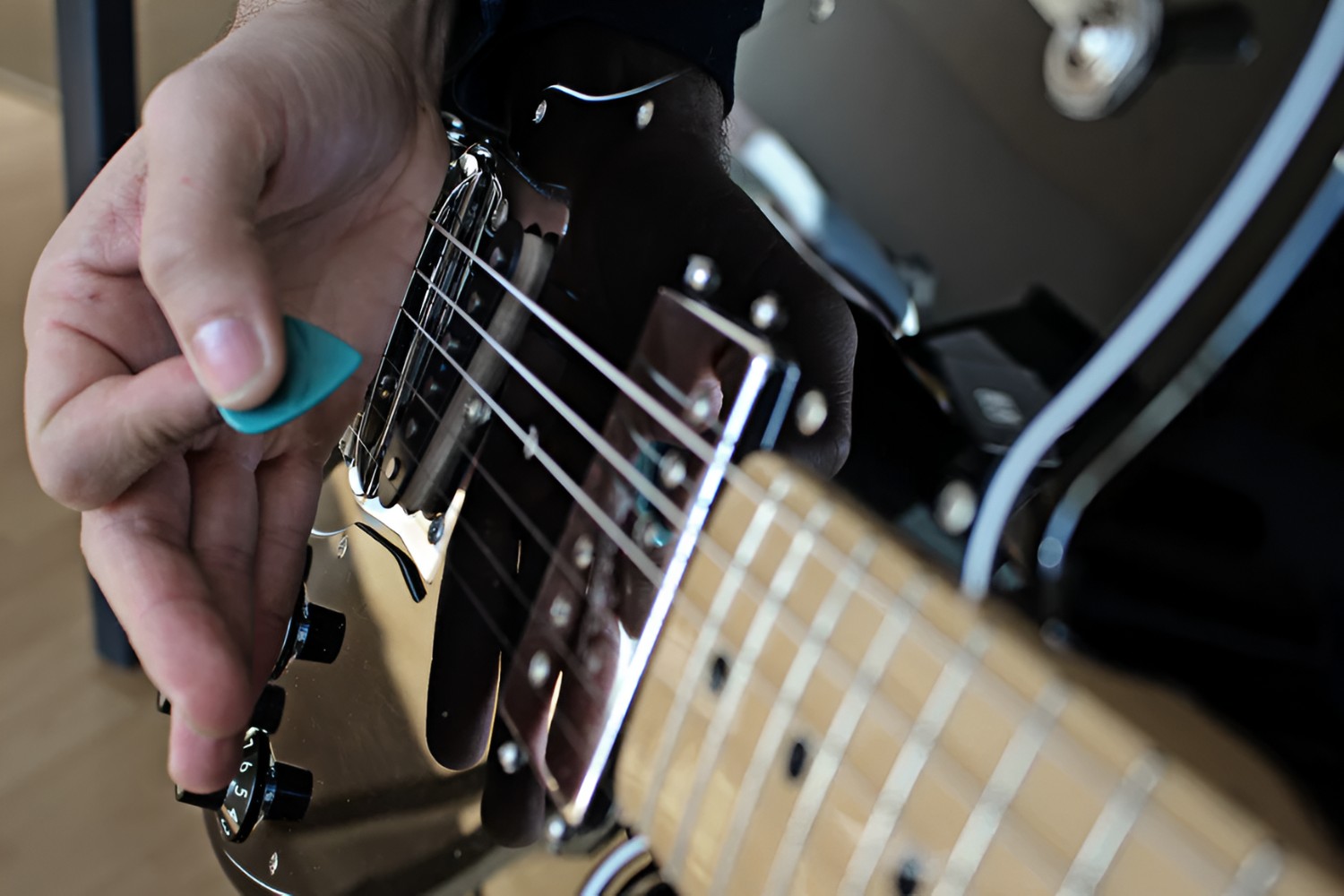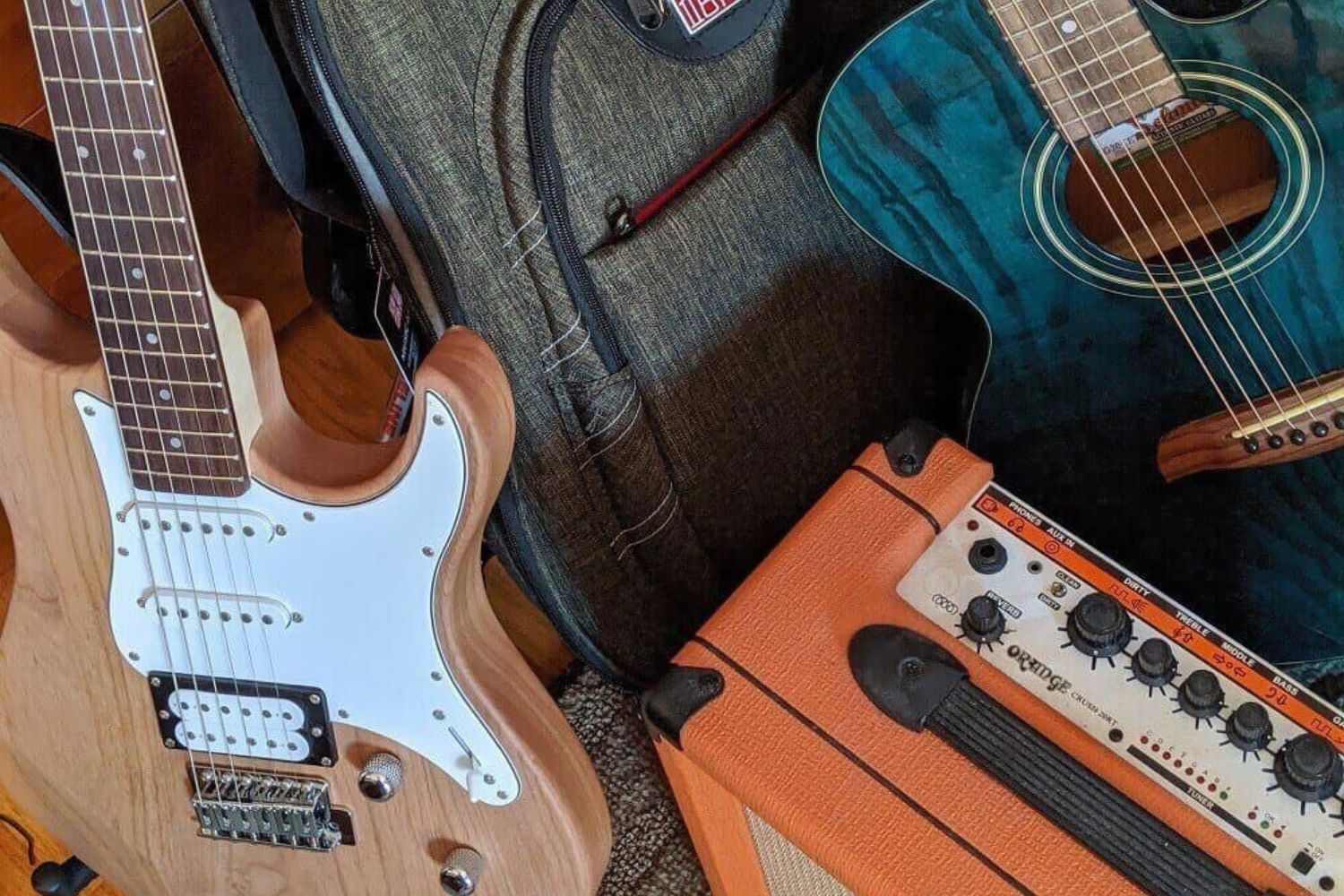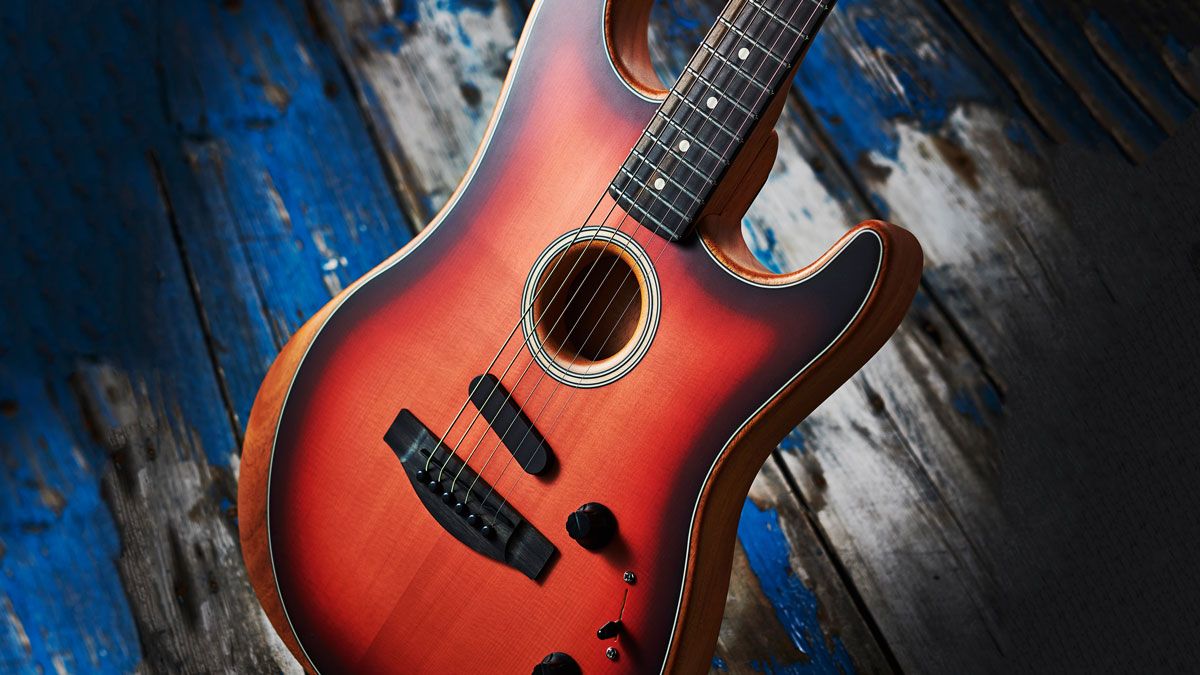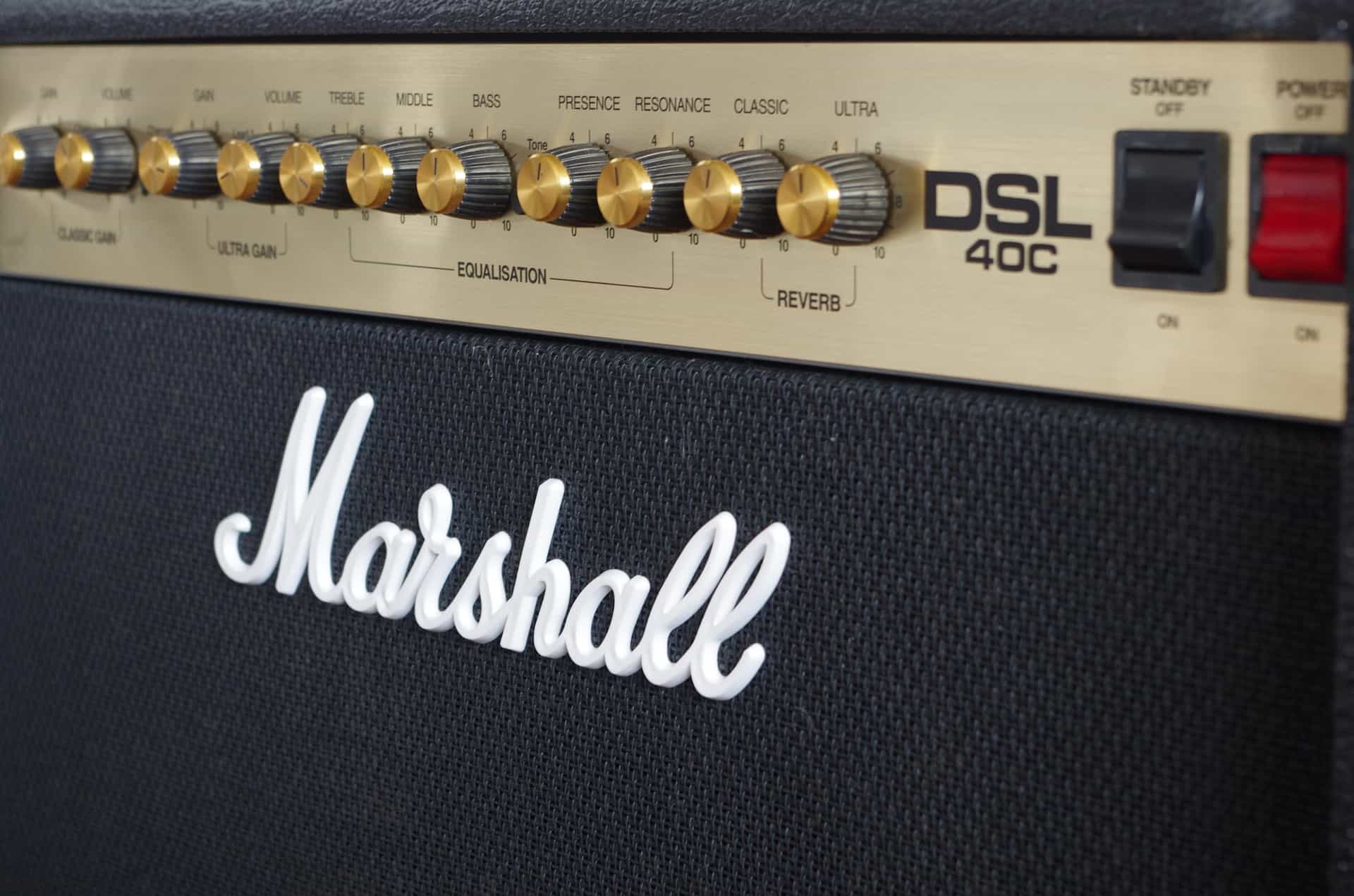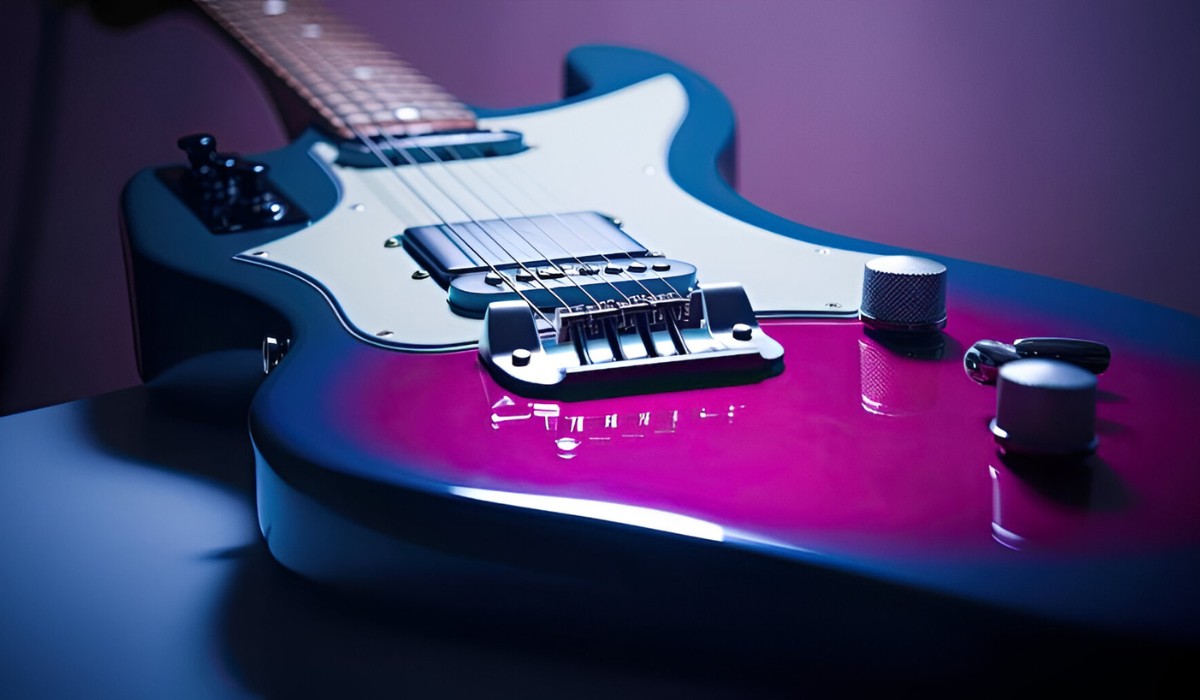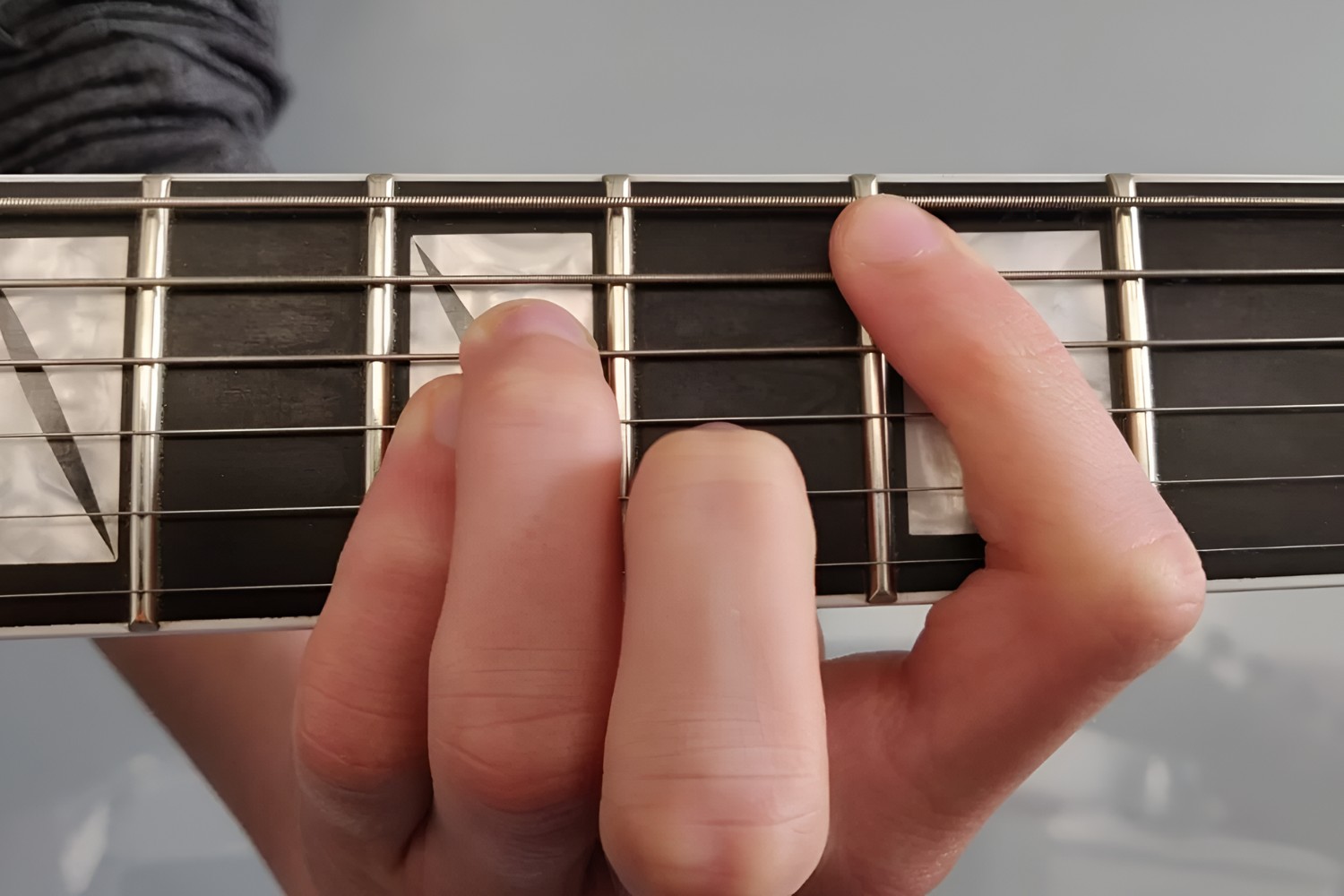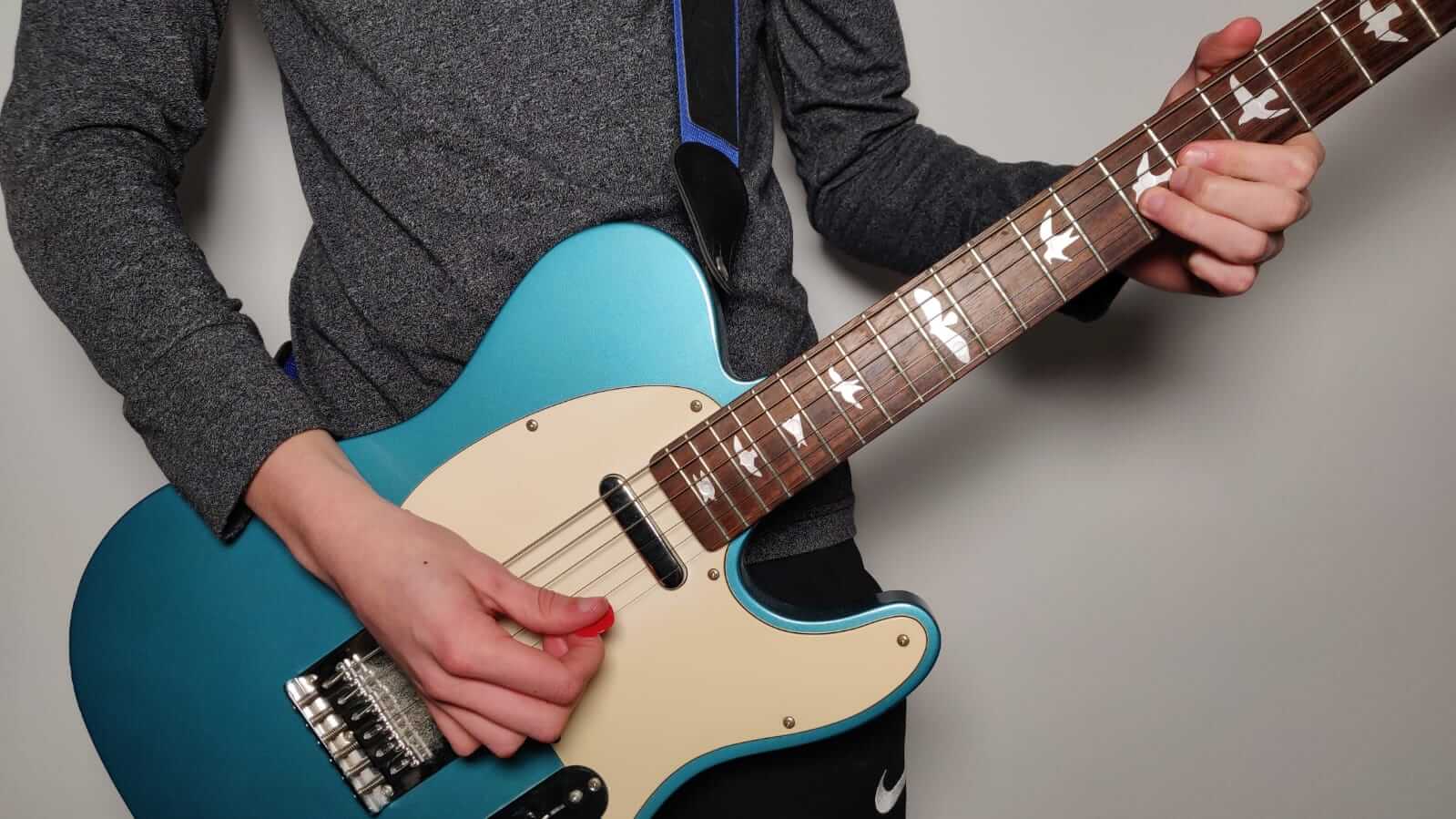Introduction
Are you ready to add a new dimension to your electric guitar playing? If you're looking to create a unique and percussive sound, palm muting is a technique that can take your skills to the next level. Whether you're a beginner or an experienced player, mastering the art of palm muting can add depth and dynamics to your music.
Palm muting is a versatile technique that can be used in various genres, including rock, metal, punk, and many others. It involves using the fleshy part of your picking hand, commonly referred to as the "palm," to dampen the strings near the bridge of the guitar. This creates a distinctive muted sound that adds a rhythmic punch to your playing.
In this comprehensive guide, we'll delve into the fundamentals of palm muting on the electric guitar. From understanding the technique to mastering it, this guide will equip you with the knowledge and skills to incorporate palm muting seamlessly into your playing style. Whether you're aiming for the aggressive chug of metal riffs or the percussive rhythm of punk rock, mastering palm muting will open up a world of creative possibilities for your music.
So, grab your electric guitar, and let's dive into the art of palm muting. Whether you're aiming to emulate the driving rhythms of your favorite bands or seeking to add a new layer of expression to your own compositions, mastering palm muting is a valuable skill that will enrich your playing and captivate your audience. Let's embark on this musical journey together and unlock the potential of palm muting on the electric guitar.
What is Palm Muting?
Palm muting is a fundamental technique employed by electric guitarists to alter the sound of the instrument, adding a percussive and muted quality to the notes. By lightly resting the edge of your strumming hand’s palm on the strings near the bridge of the guitar, you can dampen the strings’ vibrations, resulting in a distinctive muted sound. This technique is widely used in various musical genres to create a rhythmic, staccato effect that can add depth and intensity to your playing.
When executed correctly, palm muting can produce a range of tonal qualities, from subtle and subdued to aggressive and driving, depending on the amount of pressure applied by the palm. This technique is particularly popular in rock, metal, and punk music, where it is used to create powerful, chugging rhythms and add a percussive element to the music.
One of the key benefits of palm muting is its ability to control the sustain and resonance of the notes. By adjusting the pressure of your palm on the strings, you can manipulate the length and intensity of the muted notes, allowing for greater expressiveness and dynamics in your playing. This technique also enables guitarists to create a tight and focused sound that can cut through the mix, making it an essential tool for crafting impactful and memorable guitar parts.
Mastering palm muting opens up a world of creative possibilities, allowing you to infuse your playing with a rhythmic punch that can elevate your music to new heights. Whether you’re aiming to emulate the driving rhythms of your favorite bands or seeking to add a new layer of expression to your own compositions, palm muting is a versatile technique that can enhance your playing style and captivate your audience.
Proper Hand Placement
Mastering palm muting begins with establishing the correct hand placement on the guitar. To execute this technique effectively, start by positioning your picking hand (usually the right hand for right-handed players and the left hand for left-handed players) above the guitar’s bridge. Your palm should lightly touch the strings, just where they meet the bridge, allowing you to control the level of muting with precision.
When palm muting, it’s crucial to find a balance between applying enough pressure to dampen the strings and allowing them to vibrate freely to produce discernible notes. Experiment with the placement of your palm to achieve the desired level of muting, ensuring that the strings are not completely muted or left entirely open. Finding this sweet spot will enable you to produce the characteristic muted sound associated with palm muting while maintaining clarity and definition in your playing.
Additionally, pay attention to the angle of your palm in relation to the strings. Tilting your hand slightly can help you achieve a consistent and controlled muting effect across all strings. As you explore different palm positions and angles, listen closely to the resulting sound and make adjustments to refine your technique.
It’s important to note that proper hand placement is not solely about the palm’s contact with the strings. The positioning of your other fingers and the pick also plays a significant role in executing palm muting effectively. By maintaining a relaxed grip on the pick and keeping your other fingers slightly arched, you can ensure that the pick strikes the strings cleanly, allowing for precise muting and articulation.
Developing a keen awareness of hand placement and its impact on your palm muting technique is essential for honing your skills and achieving a consistent, controlled sound. With practice and attention to detail, you can refine your hand placement to unleash the full potential of palm muting and elevate your guitar playing to new heights.
Choosing the Right Pick
When it comes to palm muting on the electric guitar, selecting the right pick can significantly influence the clarity and precision of your technique. The pick’s thickness, shape, and material all contribute to the overall sound and feel of your palm-muted playing, making it essential to choose a pick that complements your palm muting style.
First and foremost, consider the thickness of the pick. Thicker picks offer greater resistance and can help produce a more pronounced attack when palm muting. They provide a solid surface for striking the strings, allowing for enhanced control and articulation. If you prefer a more aggressive and defined palm-muted sound, a thicker pick may be the ideal choice for your playing style.
Conversely, thinner picks offer flexibility and a lighter touch, which can be advantageous for achieving a softer and more subtle palm-muted tone. They allow for a gentler interaction with the strings, resulting in a smoother and less percussive sound. Experimenting with different pick thicknesses can help you determine the ideal balance between resistance and flexibility that suits your palm muting preferences.
Furthermore, the shape of the pick can impact your palm muting technique. Picks with a rounded or beveled edge can glide more smoothly across the strings, facilitating seamless palm muting and reducing the risk of unwanted string noise. On the other hand, picks with a sharper edge may offer enhanced precision and attack, making them suitable for players seeking a more aggressive and assertive palm-muted sound.
Material also plays a crucial role in pick selection. Picks made from materials such as nylon, celluloid, or Delrin can produce varying degrees of brightness and warmth in the palm-muted tones. Experimenting with different pick materials can help you discover the sonic characteristics that best complement your playing style and the musical context in which you intend to use palm muting.
Ultimately, the right pick for palm muting is a matter of personal preference and experimentation. By exploring different pick options and considering the interplay between pick thickness, shape, and material, you can fine-tune your palm muting technique to achieve the desired tonal qualities and responsiveness. Choosing the right pick is an integral aspect of refining your palm muting skills and unlocking the full expressive potential of this versatile technique.
Adjusting Your Guitar’s Tone
When delving into the realm of palm muting on the electric guitar, the instrument’s tone settings play a pivotal role in shaping the character and impact of your palm-muted sound. By making strategic adjustments to your guitar’s tone controls, pickups, and amplifier settings, you can tailor the sonic characteristics of your palm-muted playing to suit a diverse range of musical styles and sonic preferences.
One of the fundamental tone-shaping elements to consider is the guitar’s tone control knob. This feature, typically located on the instrument’s body or pickguard, allows you to adjust the treble frequencies, influencing the brightness and clarity of your palm-muted tones. Experimenting with the tone knob can help you achieve a balance between crispness and warmth, enabling you to sculpt a palm-muted sound that resonates harmoniously within your musical compositions.
Additionally, the pickup selection on your electric guitar can significantly impact the tonal qualities of palm muting. The bridge pickup tends to emphasize treble frequencies and provide a sharper, more aggressive sound, making it well-suited for delivering punchy and articulate palm-muted passages. In contrast, the neck pickup offers a warmer and rounder tonal profile, which can impart a more subdued and mellow quality to your palm-muted playing. By exploring the sonic characteristics of different pickups, you can harness their unique tonal attributes to enrich your palm muting technique.
Furthermore, the settings on your amplifier and effects pedals can further refine the tonal nuances of palm muting. Experimenting with amplifier gain, EQ settings, and effects such as compression and distortion can empower you to sculpt a diverse array of palm-muted tones, ranging from tight and percussive to aggressive and saturated. These sonic possibilities allow for creative expression and enable you to adapt your palm muting technique to suit the specific aesthetic and emotive requirements of your musical endeavors.
It’s essential to approach tone adjustments with a discerning ear, actively listening to the subtle variations in sound as you manipulate the guitar’s tone controls and amplifier settings. By honing your ability to shape the tonal characteristics of your palm-muted playing, you can craft a dynamic and expressive sonic palette that enhances the impact and artistry of your musical performances.
Practicing Palm Muting Techniques
Developing proficiency in palm muting requires dedicated practice and a systematic approach to honing your technique. By incorporating focused exercises and mindful repetition into your practice routine, you can cultivate the precision, control, and consistency essential for mastering palm muting on the electric guitar.
Begin by familiarizing yourself with the basic mechanics of palm muting. Focus on maintaining a relaxed yet stable hand position, ensuring that your palm makes consistent contact with the strings near the bridge. Practice striking the strings with your pick while applying varying degrees of palm pressure to produce a range of muted tones, from subtle to pronounced. As you refine your palm muting technique, pay close attention to the clarity and articulation of the muted notes, striving for a uniform and controlled sound across all strings.
Once you have established a foundational understanding of palm muting, incorporate rhythmic exercises into your practice regimen. Experiment with palm-muted strumming patterns, emphasizing different accents and subdivisions to develop a keen sense of timing and groove. Practice transitioning seamlessly between palm-muted passages and open chord voicings, focusing on maintaining a consistent and even-handed approach to palm muting across various musical contexts.
As you progress, challenge yourself to integrate palm muting into scale exercises, single-note riffs, and chord progressions. Explore the interplay between palm muting and fretting hand techniques, striving to synchronize the two hands to produce cohesive and compelling musical phrases. By integrating palm muting into diverse musical contexts, you can expand your technical prowess and musical versatility, laying the groundwork for expressive and impactful palm-muted performances.
Recording and critically evaluating your practice sessions can provide valuable insights into your palm muting technique. Listen attentively to the nuances of your palm-muted playing, identifying areas for improvement and refinement. By actively engaging with your recordings, you can pinpoint technical challenges, assess your progress, and set achievable goals for further development.
Consistency and patience are paramount as you embark on the journey of mastering palm muting. Dedicate regular practice sessions to refining your technique, gradually increasing the complexity of exercises and musical passages. Approach each practice session with a focused and deliberate mindset, striving for incremental progress and a deepening understanding of the nuances of palm muting.
Tips for Mastering Palm Muting
Mastering the art of palm muting on the electric guitar is an ongoing journey that requires dedication, attention to detail, and a willingness to explore creative approaches to the technique. To elevate your palm muting proficiency and unlock its full expressive potential, consider the following tips and strategies:
- Refine Your Hand-Eye Coordination: Developing precise hand-eye coordination is essential for executing palm muting with accuracy and consistency. Focus on synchronizing the movements of your picking hand and palm to achieve a controlled and uniform muting effect across the strings.
- Experiment with Palm Pressure: Explore the impact of varying palm pressure on the muted tones produced. By adjusting the pressure exerted by your palm, you can modulate the intensity and sustain of the muted notes, allowing for nuanced and expressive palm-muted passages.
- Embrace Dynamic Control: Cultivate a nuanced approach to dynamics when palm muting. Practice transitioning seamlessly between subdued, lightly-muted passages and more aggressive, heavily-muted phrases, harnessing the full spectrum of dynamic expression available through palm muting.
- Focus on Consistency: Strive for consistency in your palm muting technique across different musical contexts and playing styles. Aim to achieve a uniform and controlled sound, ensuring that each palm-muted note resonates with clarity and precision.
- Explore Articulation and Timing: Pay attention to the articulation and timing of your palm-muted phrases. Experiment with different strumming patterns, accents, and rhythmic subdivisions to infuse your palm-muted playing with rhythmic vitality and expressive flair.
- Integrate Palm Muting Creatively: Embrace the versatility of palm muting by integrating it creatively into your musical compositions and improvisations. Explore unconventional applications of palm muting to add texture, rhythm, and emotive depth to your playing.
- Listen and Learn: Study the palm muting techniques of accomplished guitarists across various genres. Analyze their approach to palm muting, paying attention to their hand placement, dynamics, and tonal nuances. Drawing inspiration from diverse sources can enrich your understanding of palm muting and inspire new creative possibilities.
- Seek Feedback and Guidance: Solicit feedback from experienced musicians or instructors to gain valuable insights into refining your palm muting technique. Constructive feedback and guidance can offer fresh perspectives and help you address technical areas that may benefit from further development.
By incorporating these tips into your practice routine and embracing a spirit of exploration and refinement, you can enhance your mastery of palm muting and unleash its expressive power in your musical endeavors.







